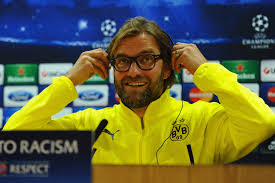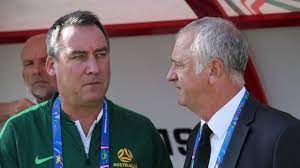Soccer Coaches vs Football Coaches: Key Differences and Similarities
Soccer and football are two of the most popular sports in the world. Both sports require a high level of physical fitness, skill, and teamwork. While the two sports share some similarities, there are also many differences between them. One of the most significant differences is the role of coaches in each sport.
In soccer, the coach is responsible for developing the skills and fitness of the players. They plan and lead training sessions, focusing on different game areas. A soccer coach will take the players through drills in training. They aim to improve the players and the team as a whole. Work can be done on technique, fitness, and tactics. On the other hand, in football, the coach’s role is much more limited. They choose the players for the team, but their role is not as significant as people believe. Clubs can change coaches, but if the players are the same, results stay the same.
While the role of coaches in soccer and football may differ, both sports require a high level of skill and teamwork. In both sports, the coach plays an important role in developing players and helping them to reach their full potential. Whether it’s soccer or football, a good coach can make a significant difference in the success of a team.
Differences in Coaching Style
When it comes to coaching, there are several differences between soccer coaches and football coaches. These differences can be seen in the way they approach tactics, fitness and skill training, responsibilities, and authority.
Tactics
Soccer coaches tend to focus more on strategy and tactics than football coaches. They need to be able to read the game and make quick decisions on the fly. They also need to be able to adjust their tactics based on the opponents they are facing. Football coaches, on the other hand, tend to rely more on pre-planned plays and formations.
Fitness and Skill Training
Soccer coaches tend to focus more on fitness and skill training than football coaches. Soccer players need to be in top physical condition to be able to keep up with the pace of the game. They also need to have excellent ball control skills. Football coaches, on the other hand, tend to focus more on strength and conditioning.
Responsibilities
Soccer coaches have a wider range of responsibilities than football coaches. They not only need to coach the players but also need to manage the team, including dealing with contracts, scheduling games, and managing finances. Football coaches, on the other hand, tend to have a more narrow focus on coaching the players.
Authority and Control
Soccer coaches tend to have more authority and control over their team than football coaches. They are often the head coach and have the final say on all decisions related to the team. Football coaches, on the other hand, often have to answer to a general manager or owner.
Overall, while there are some similarities between soccer coaches and football coaches, there are also some key differences in their coaching styles. Soccer coaches tend to focus more on strategy and tactics, fitness and skill training, and have a wider range of responsibilities and more authority and control over their team. Football coaches, on the other hand, tend to rely more on pre-planned plays and formations, focus more on strength and conditioning, and have a more narrow focus on coaching the players.
Team Management
Managing a soccer or football team involves a wide range of responsibilities, from selecting the right players to creating a winning strategy. This section will cover some of the key aspects of team management, including player signings and transfers, contracts and salary negotiations, and the roles of managers and sporting directors.
Player Signings and Transfers
One of the most important aspects of team management is identifying and acquiring talented players. Managers and sporting directors must work together to scout potential signings, negotiate contracts, and manage transfers. This process involves analyzing player statistics, scouting reports, and other data to determine which players will be the best fit for the team.
Once a player has been identified, the team must negotiate a contract that is fair for both the player and the club. This involves determining the player’s salary, length of contract, and any bonus incentives. If the player is coming from another team, the club must also negotiate a transfer fee.
Contracts and Salary Negotiations
Contracts and salary negotiations are an important aspect of team management, as they determine how much a player will be paid and for how long. Managers and sporting directors must work together to negotiate contracts that are fair for both the player and the club.
The length of a contract can vary depending on the player and the club’s needs. Some contracts may be short-term, while others may be long-term. The salary paid to a player will also depend on a variety of factors, including the player’s skill level, experience, and market value.
Roles of Managers and Sporting Directors
Managers and sporting directors play different roles in team management. While managers are responsible for coaching the team and creating a winning strategy, sporting directors are responsible for player recruitment, transfers, and contract negotiations.
Managers must work closely with sporting directors to ensure that the team has the right players to execute their strategy. Sporting directors must also work with managers to ensure that the team’s recruitment and transfer strategy aligns with the club’s overall goals.
Overall, effective team management requires a combination of coaching, recruitment, and negotiation skills. Managers and sporting directors must work together to create a winning team that can compete at the highest level.
Comparison of Results
When comparing the results of soccer coaches and football coaches, there are several performance metrics that can be used to evaluate their success. These metrics include winning percentage, goals scored, and goals against.
Performance Metrics
In terms of winning percentage, soccer coaches tend to have a higher success rate. This is because soccer games can end in a draw, which means that a coach can still earn a point towards their league standing. In contrast, football games must have a clear winner, which can make it more difficult for coaches to maintain a high winning percentage.
When it comes to goals scored and goals against, soccer coaches tend to focus more on defense, while football coaches prioritize offense. This is because soccer games often have low scoring outcomes, which means that a strong defense can be the key to winning. On the other hand, football games tend to be high scoring affairs, which means that a coach who can create a potent offense can be successful.
National Team Results
When evaluating the success of a coach at the national team level, the results can vary greatly depending on the country in question. In soccer, countries like Brazil, Germany, and Spain have a long history of success, while in football, countries like the United States, Canada, and Mexico have been successful in recent years.
One factor that can impact national team success is the style of play that the coach implements. In soccer, coaches who prioritize possession and passing tend to be successful, while in football, coaches who emphasize a strong running game can excel.
Champions League
In Europe, the Champions League is the premier club competition for both soccer and football. When comparing the success of coaches in this tournament, there are several factors to consider.
In soccer, coaches who can navigate the group stage and advance to the knockout rounds tend to be successful. Once in the knockout rounds, a coach’s ability to make tactical adjustments can be the difference between winning and losing.
In football, the playoff format of the Champions League means that coaches must be able to win big games in order to advance. This can require a coach to take risks and make bold decisions in order to secure a victory.
Other Tournaments
Outside of the Champions League, there are several other tournaments that can be used to evaluate the success of soccer and football coaches. In soccer, the World Cup is the most prestigious international tournament, while in football, the Super Bowl is the biggest club competition.
When evaluating success in these tournaments, factors like team depth, injuries, and luck can all play a role. A coach who can manage these variables and get the most out of their team can be successful, regardless of the sport they coach.
Overall, when comparing soccer coaches and football coaches, there are several performance metrics and tournaments that can be used to evaluate their success. While there are differences in the two sports, a successful coach in either sport must be able to manage their team effectively and make the right decisions at critical moments.
Fan Perspective
When it comes to soccer and football, both sports have passionate fan bases. However, there are some differences and similarities in fan culture between the two sports.
Differences in Fan Culture
Soccer fans are known for their passionate support for their clubs and countries. They travel to away matches, sing songs for the entire game, and even create choreographed displays of support. In contrast, football fans in the United States tend to be more focused on tailgating and pre-game festivities. They may wear team jerseys and paint their faces, but the level of passion is often not as intense as it is in soccer.
Another difference in fan culture is the use of chants and songs. Soccer fans are known for their creative and often humorous chants, which are often sung in unison. Football fans, on the other hand, tend to rely on cheers and chants that are led by cheerleaders or announcers.
Similarities in Fan Culture
Despite the differences, there are also some similarities in fan culture between soccer and football. Both sports have dedicated fan bases that are loyal to their teams. They both have traditions and rituals that are passed down from generation to generation. For example, the Green Bay Packers in the NFL have their famous “Lambeau Leap” celebration, while soccer fans in Brazil have their “samba dance” celebration.
Another similarity is the use of social media to connect with other fans. Both soccer and football fans use platforms like Twitter and Reddit to share their thoughts and opinions about their favorite teams and players. In fact, there is a subreddit called r/funny that is dedicated to sharing funny moments from both sports.
Funny Moments in Soccer and Football
Speaking of funny moments, both soccer and football have had their fair share of hilarious and memorable moments. In soccer, there was the time when a player accidentally kicked a ball into his own face, or when a referee accidentally tackled a player. In football, there was the time when a player ran the wrong way on a kickoff return, or when a coach accidentally tripped a player on the sideline.
These moments often go viral on social media, with fans sharing and commenting on them for days or even weeks after they happen. In fact, some of these moments have become so popular that they have been archived and can still be found on platforms like Reddit.
Overall, while there are some differences and similarities in fan culture between soccer and football, both sports have passionate and dedicated fan bases that love to support their teams and share funny moments with each other.
Facilities and Resources
Training Facilities and Equipment
Soccer and football coaches require different types of training facilities and equipment. While football coaches need large fields with goalposts, soccer coaches need smaller fields with goal nets. The equipment used by soccer coaches includes cones, balls, and training bibs, while football coaches use tackling dummies, blocking sleds, and helmets.
The quality of the training facilities and equipment can have a significant impact on the performance of the team. Soccer coaches need to ensure that the training fields are well-maintained with proper drainage and irrigation systems. They also need to ensure that the equipment is of good quality and in good condition.
Departmental Structure
The departmental structure of soccer and football teams also differs. Football teams have a larger coaching staff, including offensive and defensive coordinators, quarterback coaches, and special teams coaches. On the other hand, soccer teams have a smaller coaching staff, with the head coach responsible for all aspects of the team’s performance.
The departmental structure of the team can affect the team’s performance. Football coaches can delegate responsibilities to their coordinators and focus on specific aspects of the game. Soccer coaches, on the other hand, need to have a broad understanding of the game and be able to manage all aspects of the team’s performance.
Academy and Youth Development Programs
Soccer and football teams also differ in their approach to academy and youth development programs. Soccer teams typically have a well-established academy system that focuses on developing young players and preparing them for the first team. Football teams, on the other hand, rely more on the college system to develop their players.
The academy and youth development programs can have a significant impact on the long-term success of the team. Soccer coaches need to ensure that the academy system is well-structured and provides the necessary resources to develop young players. Football coaches need to ensure that their players are prepared for the college system and have the necessary skills to succeed at the next level.
In conclusion, soccer and football coaches require different types of facilities, training, departmental structures, and academy and youth development programs. The quality of these resources can have a significant impact on the team’s performance and long-term success. Coaches need to ensure that they have access to the necessary resources to develop their players and prepare them for success on and off the field.
Player-Coach and Player-Manager Roles
Soccer coaches and football coaches have different roles and responsibilities. However, there are some similarities between the two, such as the player-coach and player-manager roles. In these roles, a player takes on coaching responsibilities while still playing on the field.
Vincent Kompany’s Transition to Player-Manager
Vincent Kompany is a well-known example of a player who transitioned into a player-manager role. He played for Manchester City for 11 years and was their captain for several seasons. In 2019, he became the player-manager of RSC Anderlecht, a Belgian football club.
Kompany’s transition to a player-manager role was not easy. He had to balance his responsibilities as a player and manager while also learning how to manage a team. However, he was able to lead his team to several victories and helped them avoid relegation.
Historical Examples of Player-Coaches and Player-Managers
Historically, player-coaches and player-managers were more common in football than in soccer. In the early days of football, coaches were often players who also took on coaching responsibilities. Some well-known examples of player-coaches include:
- Kenny Dalglish: He played for Liverpool and also served as their player-manager from 1985 to 1991.
- Johan Cruyff: He played for Ajax and also served as their player-manager from 1985 to 1988.
- Franz Beckenbauer: He played for Bayern Munich and also served as their player-manager from 1977 to 1979.
In soccer, player-coaches and player-managers are less common. However, there have been some notable examples, such as:
- Ryan Giggs: He played for Manchester United and also served as their player-coach from 2013 to 2014.
- Robbie Fowler: He played for Brisbane Roar and also served as their player-manager from 2019 to 2020.
Overall, the player-coach and player-manager roles require a unique set of skills. The individual must be able to balance coaching responsibilities with playing on the field. Additionally, they must be able to earn the respect of their teammates while also making difficult coaching decisions.








